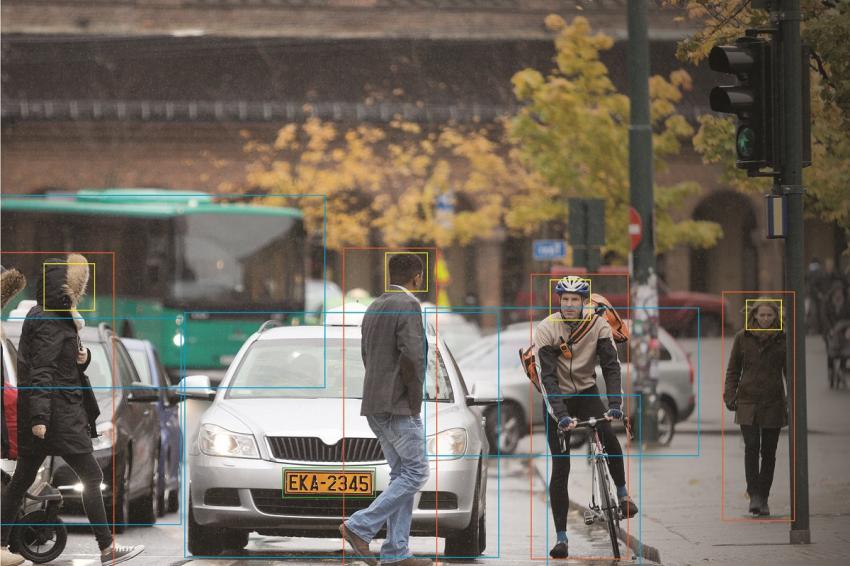AI is not just for high-end video surveillance
15.06.2021 - Uri Guterman, Head of Product & Marketing for Hanwha Techwin Europe, explains why Deep Learning AI is no longer an emerging technology which is only suitable for high security or mission critical video surveillance cameras
Unless you have recently been involved in video surveillance projects which involve Deep Learning AI, you might be under the impression that the technology is too expensive to be deployed for anything other than high-end applications.
With the introduction of a new generation of affordable cameras supplied with Deep Learning AI onboard, this is far from being the case. However, the jargon associated with the technology, such as artificial neural networks and machine learning, may certainly have created the impression that the capabilities of what the technology can deliver go way beyond what the majority of end-users require to achieve maximum benefit from their video surveillance solutions.
Eliminating false alarms
This is also far from being the case, as the most situations where AI cameras are likely to be deployed will be where there is a basic need to solve the age old problem of false alarms which have plagued the electronic security industry for decades.
In simple terms, Deep Learning AI video analytics ignores video noise, waving trees, moving clouds and animals, all of which might normally be the cause of false alarms when standard motion detection technology or sensors are being used to detect activity, because it has not been trained to look out for them.
This higher level of performance of Deep Learning AI based video analytics means control room operators and security personnel can focus on responding to real incidents and emergencies and not waste time and effort on false alarms. In addition to extreme accuracy, deep learning also allows operators to search for specific features and attributes, including a person’s age group and gender, and whether they are wearing glasses, a hat, or carrying a bag.
Easy to set up and use
In reality, with all the clever bits already built into AI cameras, there is nothing at all complicated about installing, setting up and using Deep Learning AI. System integrators should therefore be able to put the technology to good use as part of virtually any video surveillance project.
With AI ready to work out of the box, albeit with the opportunity to customise it to reflect an end-user’s operational requirements, there is no real need for users to get to grips at a deep technical level with how it works. However, what follows is an overview of the technology.
Let’s start with deep learning. This is part of machine learning and is a way of achieving artificial intelligence by training a machine to perform tasks based on a large number of examples. To do this, deep learning uses multi-layered or deep artificial neural networks, which are essentially mathematical models inspired by the human brain. The fact they are deep makes them very suitable for solving complex problems, such as identifying and recognising objects and events in raw video, with extremely high accuracy.
As an example, being able to correctly establish the gender of a person requires expert Hanwha Techwin R&D engineers to design, train and validate a deep learning network which, during the training stage uses a database of millions of suitably selected faces, each of which is tagged with its known true gender. After several days of training by our engineers, the neural network is ready to be put to work and is likely to have an accuracy of approximately 98%, which is about the same as the ability of human beings to do the same thing.
Deep Learning AI techniques offer a far superior performance compared to more traditional video analytics. The latter are usually based on motion detection and are therefore not sophisticated enough to detect static objects such as parked vehicles or cope with video noise, such as light pollution from headlights or moving shadows, all of which are causes of false alarms.
The performance of the analytics is just as impressive in fast moving or very busy environments, which improves the forensic search for evidence and speeds up investigations.
For these reasons and more, it is perhaps inevitable that Deep Learning AI will gradually replace traditional video analytics for the majority of applications and particularly those which suffer most from false detection.
Deep Learning AI is particularly suitable for applications which require a greater degree of sophistication than that offered by traditional video analytics. It enables, for example, retailers to capture and analyse business intelligence such as age and gender, allowing them to granularly analyse customer demographics and in doing so, gain a greater understanding of customer behaviour and buying patterns.
It should be pointed out that Deep Learning AI has made a valuable contribution over the last year or so, as it has been at the heart of face mask detection, distance measuring and occupancy monitoring applications.
Summary
In addition to helping combat criminal activity, there are countless ways edge-based Deep Learning AI video analytics can help businesses improve productivity and operate safely in a pandemic affected world. With the recent availability of more keenly priced cameras equipped with the technology, users can now expect a high return on investment, regardless of how they capitalise on the technology.
Uri Guterman, Head of Product & Marketing for Hanwha Techwin Europe









